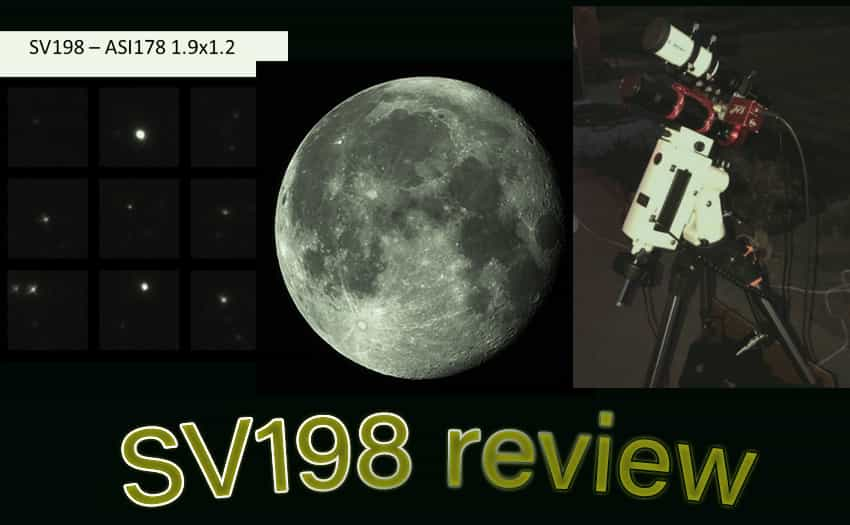SV198 Guide Scope-Imaging telescope review

SV198 Guide Scope-Imaging telescope review
1. who would use a guide scope to image?
The first question I need to answer is who would use a guide scope to image? As I mentioned in the introduction, I am a member of a volunteer group that is building imaging systems for the 2024 eclipse. We built 66 systems for the 2017 solar eclipse that cost $3500 apiece. For this effort, we are looking to substantially reduce the cost.
So, for now, we are using the Raspberry Pi HQ camera. We would like to get a field of view of 2 x 1.5 degrees and it turns out that a 200mm focal length lens is ideal. We did several tests with both the SV198 and another inexpensive 200mm guide camera from a different manufacturer. First let me say that there are several problems with a 2 element f/4 lens, the first being chromatic aberration, and the second being coma, and the third being difficulty in focusing something that fast. The coma can be corrected with a 1.25” f/4 field flattener. But, that introduced a second problem and that is in-focus travel.
The scope from the other manufacturer did not have enough in-focus travel to use with the field flattener. Thanks to the large focus range of the SV198 there was plenty of in-focus. In addition, the helical focuser was very precise and we could get a good focus and with the field flattened, we got pretty good images across the 2 x 1.5-degree field of view. Finally, since we will be doing the sun, we will use a #58 green filter to eliminate the chromatic aberration. You’ll see an image down below of the moon without the field flattener and with and without the green filter. There is some difference, but since we will only take the filter off during totality it shouldn’t be a big problem. The image on the left is the test setup with the SV198 on top and the other 200mm guide scope on the bottom.
2. Star and Moon Images Test
2.1 The images below show two different systems, on the left, is the SV198 with Field Flattener and an ASI178 camera (It was a far better test camera than the Pi HQ). On the right is a Williams Optics 71mm telescope with a Williams Optics Field Flattener and a QHY294 camera that gave the same field of view. The black box at the bottom with the small blue boxes shows where the star images came from in the image. All in all the SV198 with the field flattener (about $300) didn’t do too bad considering the other scope with field flattener was $1500.

2.3 Conclusion
The SV198 is not only a good guide scope, it can even be used as an imaging scope in a pinch or, like my application, for a low-cost imaging solution. Paired with a 1.25” Field Flattener it produces decent images across about 1.5-degree field of view. Even without a field flattener, it produces decent images across ½ degree and even better if you use a filter to reduce the chromatic aberration.
Thanks for reading.
Kevin Cobble
Z-Field Observatory








